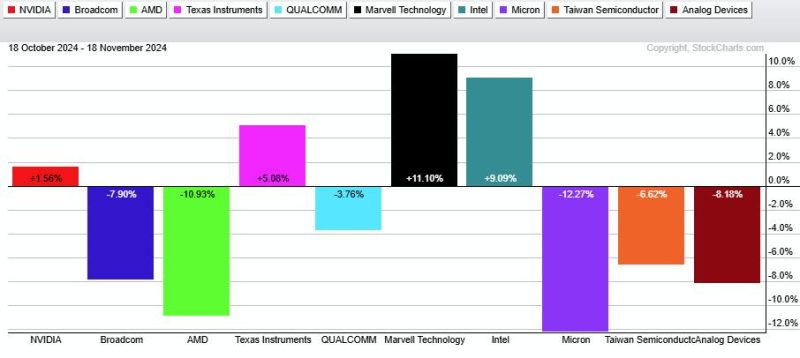In the fast-paced world of technology and finance, exchange-traded funds (ETFs) play a crucial role in providing investors exposure to various sectors and industries. When it comes to the semiconductor industry, two ETFs have been in the spotlight for their performance— the iShares PHLX Semiconductor ETF (SOXX) and the VanEck Vectors Semiconductor ETF (SMH). Despite both focusing on the semiconductor industry, these two ETFs have shown distinct performance patterns, with SMH holding up better than SOXX in recent times.
One key aspect that sets SMH apart from SOXX is its underlying holdings. SMH has a more diversified portfolio compared to SOXX, with a larger number of holdings spread across different market segments within the semiconductor industry. This diversification acts as a buffer against excessive exposure to individual stocks, thus potentially reducing the impact of negative news or events affecting a particular company.
Moreover, the weighting methodology of these ETFs also contributes to their performance differences. SMH utilizes a modified market-cap weighting approach, where the weight of each holding is adjusted to prevent an overconcentration of a few large-cap stocks. On the other hand, SOXX follows a traditional market-cap weighting method, which may result in higher exposure to a few top holdings, making it more susceptible to fluctuations in those particular stocks.
Additionally, the sectoral allocation of these ETFs plays a role in their performance dynamics. While both SOXX and SMH focus on the semiconductor industry, SMH allocates a higher percentage of its portfolio to semiconductor equipment and materials companies compared to SOXX. This allocation strategy has proved beneficial for SMH, especially during periods when equipment and materials companies outperform semiconductor manufacturers.
Furthermore, the global perspective of these ETFs also influences their performance. SMH has a more significant exposure to international semiconductor companies, providing investors with diversified geographic risk exposure. This international presence has helped SMH weather market uncertainties and currency fluctuations, contributing to its relative resilience compared to SOXX.
It is important to note that market conditions, economic factors, and technological advancements can impact the performance of semiconductor ETFs. Investors should conduct thorough research, consider their risk tolerance, and investment objectives before including these ETFs in their portfolio. While both SMH and SOXX offer exposure to the semiconductor industry, understanding their underlying differences can help investors make informed decisions and optimize their investment strategies in this dynamic sector.
